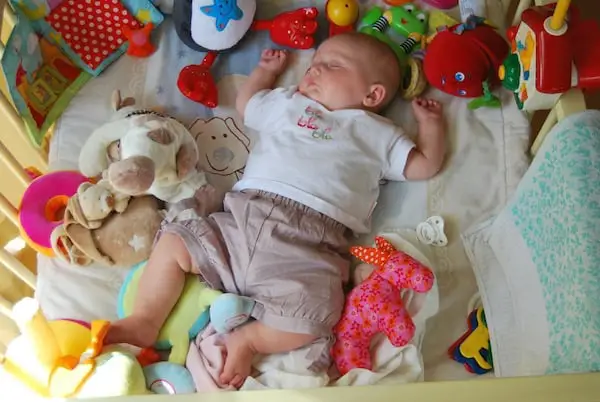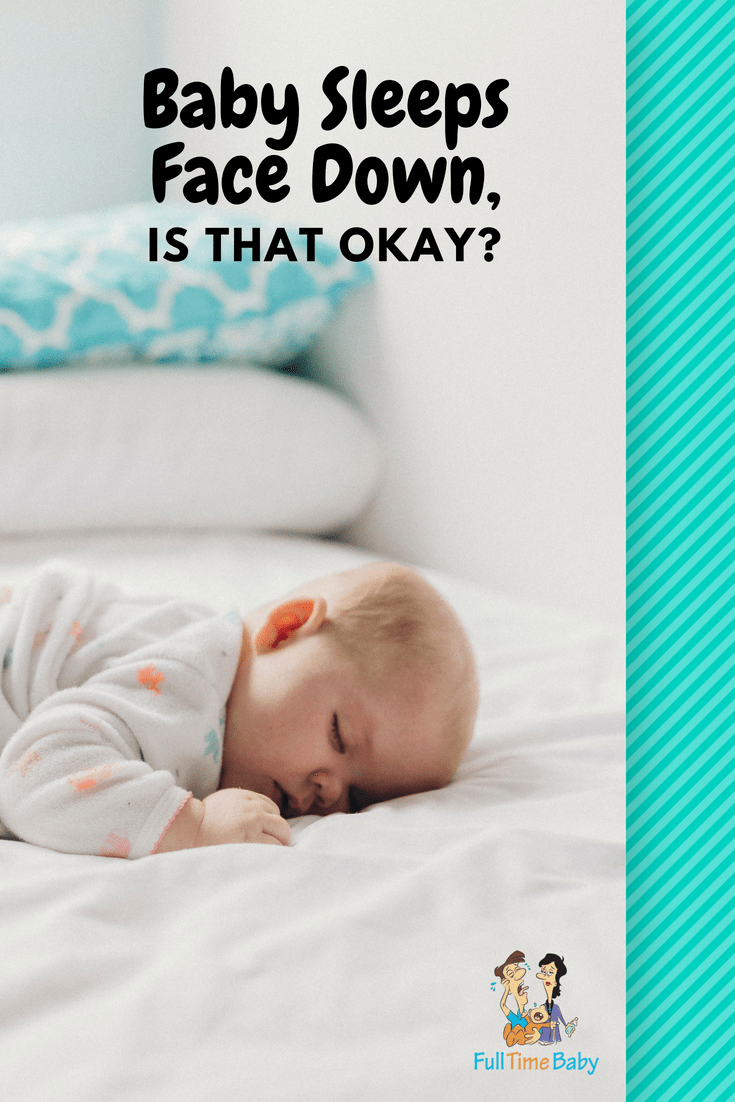Parents are pretty well known for sneaking into the baby room to check for breathing. When a baby starts trying to sleep face down, you can bet your heart starts skipping a beat.
Is Sleeping On The Stomach Common?
Most Americans today were actually probably raised sleeping on their stomachs. Parents find that babies tend to sleep well on their stomachs-there’s something about tummy sleeping that calms the nervous system.
Sleeping Face Down Used To Be Normal
One of the hardest things about raising children is that health advice is also constantly changing. As recently as the 1990s 70% of infants were put to sleep on their stomach. It wasn’t until 1992 that the American Academy of Pediatrics officially advised that parents put babies to bed on their backs for the entire first year of life.
You may have heard the “Back To Sleep” sleep campaign, which was the public campaign to put babies to sleep on their backs, following medical advice that still stands today.
Risk of SIDS
Studies have shown a link between the way a baby sleeps and the risk factor for SIDS. Doctors don’t entirely understand or know the cause of SIDS, which is why it’s been given the vague name “Sudden Infant Death Syndrome”.
SIDS cases
The statistical rate of SIDS occurrence is about 0.05% or 1 death for every 2000 babies, according to the National Centers for Health Statistics. So while it is a rare occurrence it is still a leading cause of death.
When a baby sleeps lying face down, there is the possibility that their heads may be pressed into the mattress. This in turn could cause a pocket of air to form right around their face. This makes for decreased breathing ability and air supply—certainly not an ideal situation.
Safe Sleep
However SIDS rates did drop drop in half after the parents started putting babies to sleep on their backs.. Parents are also advised not to place loose items in the crib to minimize the risk of SIDS. Swaddling helps.
Clearly no parent sets out to put their baby in unnecessary danger. Hospitals typically swaddle newborns and encourage parents to continue doing so for better sleep, but it is definitely not safe to put a baby on the stomach swaddled.
Why Do Parents Put Babies To Sleep Face Down?
An informal BabyCenter.com poll actually showed that out of 24,000 parents, roughly the same number of parents were putting their babies to sleep on their stomachs as their backs. This is even while half of the parents admitted being scared about SIDS.
While sometimes there may be a lack of awareness, some parents are still making the choice , either because the babies could be doing so themselves, and/or this helps the whole family sleep better. If your baby sleeps face down you are not alone.
When Can My Baby Sleep On The Stomach?
SIDS risks tend to be the highest when a baby is younger than 4 months, though they can still a factor for babies under a year old. One of the main issues is that a baby doesn’t have the ability to roll over when they are first born.
The Older the better
There’s not necessarily a hard and fast rule to this question. The greatest risk for a baby to develop SIDS is between 1-4 months, so you might say that after that time period it gets progressively. The problem though is that babies are all different and this has less to do with age and more to do with their development overall.
For premature babies there’s certainly a bit more cause for caution. For full term, healthy babies, it’s still important to see whether your baby has gained strength in the neck.
You want to see that a baby has the ability to roll over on their own. When babies can safely roll over, often babies roll over themselves to sleep on their stomach. The idea being that if for some reason the baby can’t breathe, they have the ability to roll over.
If you’re not seeing the neck strength or rolling over, back is best. Even if you do see these things present though, you want to evaluate your baby and situation specifically.
There’s another caveat
A study done at the S. Louis Children’s hospital actually noted that babies who had prior experience sleeping face down were able to adjust better. That may seem a bit circular, clearly a baby who’s been able to sleep safely on the stomach before has a better chance of doing it again.
Babies sleeping face down will rebreathe some of the carbon dioxide they’ve exhaled. However babies typically learn to lift and turn their heads to the side for fresh air.
The takeaway though, is that parents may think a baby is ready when he/she can lift the head, though that may not be the case. If a baby is suddenly placed on the stomach to sleep, there’s reason to be diligent.
Safety Measures
A breathable crib mattress might ben a cautionary step that’s reasonable to take. A friend in our special needs community recommended it, and mentioned that she and her husband had tried it, putting their faces into it to see if it was really breathable. They’d decided on it when their baby was rolling over only from back to front, but not from front to back.
Baby monitors are also a way to keep track of your baby, especially from another room.
Understand Your Baby and Their Specific Development
Actionable steps
Watch your baby sleep, particularly if they are on their stomach, and see if your little one can move the head to the side or not. If babies are truly face down, pressed into the mattress then that’s more of a problem.
Some baby monitors can actually even monitor breathing, so for the anxious parent (and there are a lot of us out here), that may help do the trick.
Rolling over is key
Be sure that your baby has the ability to roll over and strength in their neck. This can be encouraged through starting tummy time, which doctors recommend beginning around 2 months.
It’s always better to be safe than sorry. When your baby is particularly young, following medical directives to sleep on their back will let you be at more peace, though granted it may not allow you to sleep easier. When they are old enough to roll over, then there’s often no stopping them from ending up on their stomach.
Conclusion
Babies may all be different but the bottom line is that development is a very individual thing. Parents need to be fully aware that by following standard medical guidelines for back sleeping until a year old, you may minimize your risk of SIDS.






